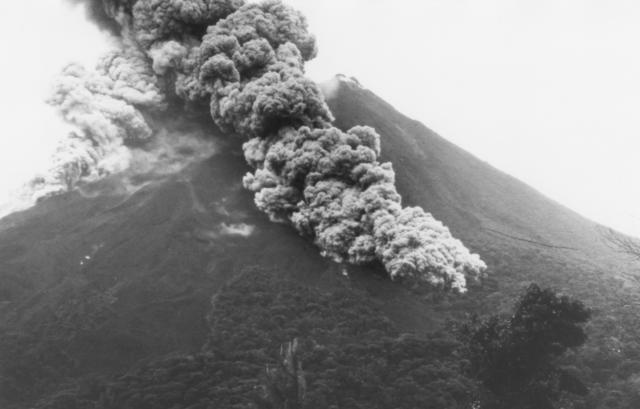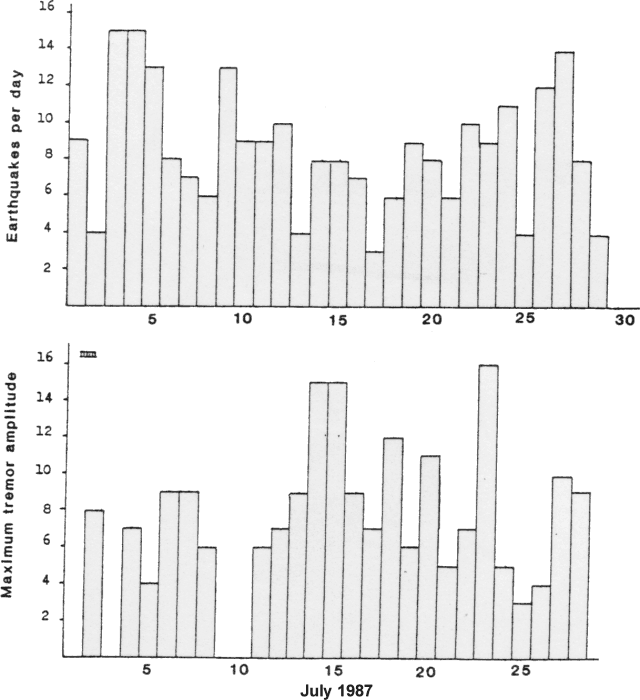Report on Arenal (Costa Rica) — July 1987
Scientific Event Alert Network Bulletin, vol. 12, no. 7 (July 1987)
Managing Editor: Lindsay McClelland.
Arenal (Costa Rica) Moderate activity continues; explosions increase
Please cite this report as:
Global Volcanism Program, 1987. Report on Arenal (Costa Rica) (McClelland, L., ed.). Scientific Event Alert Network Bulletin, 12:7. Smithsonian Institution. https://doi.org/10.5479/si.GVP.SEAN198707-345033
Arenal
Costa Rica
10.463°N, 84.703°W; summit elev. 1670 m
All times are local (unless otherwise noted)
Activity continued at a moderate level during July (figure 13). The number of explosions increased to an average of 8/day, but explosion energy decreased. Maximum recorded explosion rates peaked at 15/day at the beginning and end of July (figure 14). Tremor amplitude showed a moderate increase around mid-month (figure 14).
 |
Figure 13. Nueé ardente descending the SSE slope of Arenal at 1631 on 13 July, taken from the Volcanological and Biological Observatory, 2.5 km S of the summit. Courtesy of W. Melson. |
 |
Figure 14. Seismicity recorded at Arenal's FOR station in July 1987. Daily number of volcanic earthquakes (top) and maximum daily tremor amplitude (bottom). |
Geological Summary. Conical Volcán Arenal is the youngest stratovolcano in Costa Rica and one of its most active. The 1670-m-high andesitic volcano towers above the eastern shores of Lake Arenal, which has been enlarged by a hydroelectric project. Arenal lies along a volcanic chain that has migrated to the NW from the late-Pleistocene Los Perdidos lava domes through the Pleistocene-to-Holocene Chato volcano, which contains a 500-m-wide, lake-filled summit crater. The earliest known eruptions of Arenal took place about 7000 years ago, and it was active concurrently with Cerro Chato until the activity of Chato ended about 3500 years ago. Growth of Arenal has been characterized by periodic major explosive eruptions at several-hundred-year intervals and periods of lava effusion that armor the cone. An eruptive period that began with a major explosive eruption in 1968 ended in December 2010; continuous explosive activity accompanied by slow lava effusion and the occasional emission of pyroclastic flows characterized the eruption from vents at the summit and on the upper western flank.
Information Contacts: R. Barquero and Guillermo Alvarado, ICE.

